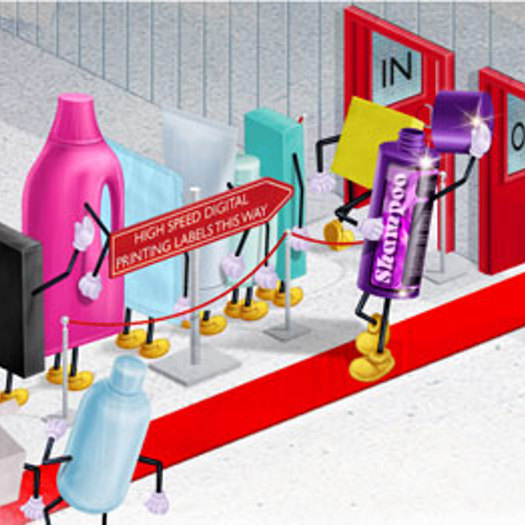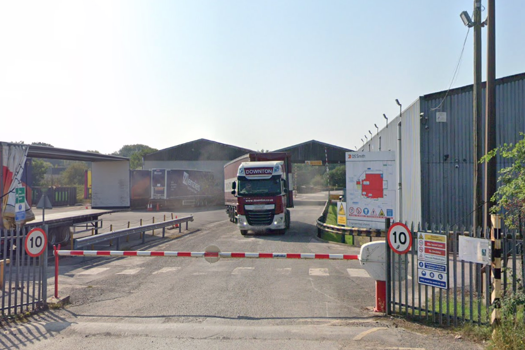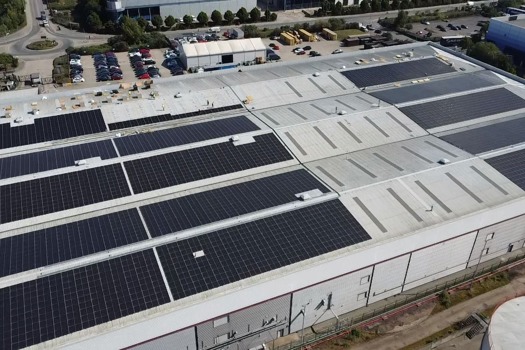However, things are changing. The transformative effect those leaps of IT have made on the consumer is forcing those industries used to a slower rate of change to adapt. The digital packaging printing opportunity exists because consumer habits have been altered by experiences elsewhere – personalisation, immediacy and flexibility have become commonplace over the past five years. It means that packaging over the next 10 years may have to evolve more than it has in the past 50.
Quite what this alternative future will look like, no one can be sure, but below, some of packaging’s leading figures give us a window into their blue sky thinking for the future of packaging.
Dick Searle, chief executive, The Packaging Federation
"Personalisation is going to be increasingly in demand and digital print technology is already getting into place to achieve that. What is absent is the viable economic business model to utilise it. One of the things some people have talked about is retailers doing their own packaging in-store. In theory that is possible, but retailers won’t want to add the cost to enable that. It would require a massive capital investment and the retailers would only do it if they got a return on that investment, and there is little evidence consumers are willing to pay a premium for that sort of product. That may change. Another interesting question is whether products bought over the internet need as much printing and decoration as those in store? And if they don’t, how does the retailer balance the online and offline offering? Hold two sets of stock? The point about digital is its flexibility. In which ever way retail progresses in the coming years, what we can be sure of is that flexibility will be increasingly important and therefore digital print will play a bigger role."
Rudy Martinez, head of concept design, ASG (AGI-Shorewood Group)
"In 10 years, we should start to see the first signs of a shortage of fossil fuel. It will have a great impact on the cost of manufacturing – imagine a world without plastic! – and, obviously, transport. The whole supply chain, including the packaging industry, will have to re-invent itself. Production will be more local and stocks will have to be managed to perfection to avoid waste. So the future of packaging is in highly personalised, digitally printed, short-run packs with printed electronics. The result will allow for great flexibility, pace and reactivity. Each product scanned at the point of sale will
generate a re-provisioning order and should result in a zero-stock supply chain where only what is needed is produced."
Mark Alexander, director of marketing, Xaar
"Packaging is going to be increasingly short run. For example, in pharmaceuticals, legislation now says packaging messaging has to be clearer and so it will have to be tailored to each language, so runs will be shorter. There is also increasing demand for localisation of packaging, which is also bringing runs down. Then there is the gifting market – no one knows how big that will get but increasingly people are expressing themselves by personalising packaging for gifts and I think that will grow to be a significant market. Inkjet, particularly piezo inkjet, will be crucial to all of this. The addition of value, both personalisation and customisation, will be crucial and inkjet enables you to do both affordably and in short runs. It is already starting; in Germany, there is a printer that is using inkjet to print directly onto beverage products, cutting out a number of stages of the labelling process and doing so very cost effectively. In 10 years’ time, the big retailers could be personalising packs onsite with a simple inkjet bar. The same goes for companies for whom the packaging is always a set size, such as Dominos."
Bob Leahey, associate director, InfoTrends
"The biggest change will be the adoption of wide, colour digital presses, both electrophotographic (EP) and inkjet. Some models will have their first placements in 2013 and 2014, with HP Indigo, Océ, and Screen as examples. These systems and their successors will have had hundreds of installations 10 years from now. They will be printing folding cartons and even flexible packaging and will make colour digital printing of packaging much more convenient. That will be because the imposition of big packaging images will be far easier than it is on current digital presses, most of which are designed for label printing and have web or throat dimensions of 13in (330mm) or less. EP will still dominate digital package printing, but inkjet presses will be more competitive than they are now, in everything from prime labels to folding cartons. Meanwhile, there will be more liquid toner EP presses, and if the hype holds true, they will be faster than dry toner technology. Finally, digital printing for packaging will work in tandem with analogue presses, sharing the production in packaging converting as it often does now in label converting. Even in 2023, though, conventional presses will still print over 90% of the physical volume in folding cartons and other packaging. The main reason will be that litho and other analogue printing will still outshine digital in terms of productivity and running costs for printing longer runs. In some cases, though, inkjet printheads will be mounted inline with conventional presses, to provide the best of both worlds."
Christian Menegon, business development manager, industrial products, HP Indigo
"We already have roll-fed machines that could feasibly do a large proportion of all packaging types, and in 10 years’ time it is feasible that there will be a press that can print almost all types of packaging. However, it is not just about the printing, it is about the finishing too. My main concern is that the finishing is currently lagging behind. Historically, printing and finishing technologies almost spur each other on in terms of development. If you look at digital printing, we developed the technology and then the finishing caught up and highlighted ways in which we could improve, and then having done that, the onus was back on the finishing manufacturers. Currently, the finishing options for digital packaging are not up to speed and the hope would be that in the next five or 10 years, it will get there. And then we will have to respond to that in terms of the press capability."
Chris Jones, director, Novalia Printed Electronics
"In 10 years, we should be seeing more interactive packaging that utilises conductive inks. The technology is here already and it can be applied using current print processes, and by that I mean conventional presses, not digital. For the sort of work we are doing, it is actually easier to use the conventional processes. So in 10 years’ time, I still expect the bulk of packaging printing to be done with conventional processes. It will not only be for packaging purposes that packaging printers can use this technology either. We are looking at where packaging presses can produce products that are not packaging. So, for example, circuits to go into children’s toys and games. We are also looking at printing electronics for consumer goods that will interact with your smartphone or with your computer. All on a machine that you would recognise as a commercial label or carton press."
Jon Harper Smith, marketing manager, Fujifilm Europe, Graphic Division
"The supermarkets would like to find a way of localising or regionalising products by using the packaging, but on a practical level that is going to be difficult; it would require an exponential increase in products and a disconnect between packing and labelling, with both causing issues. It is a very limited market that will develop – and has developed already – in gifting using digital technology, in both cartons and labels. Where I see more of an opportunity emerging for digital may surprise some. I think on this issue, the first problem is that when people say digital they think of short runs and personalisation. That can be misleading. I believe digital packaging printing has a bright future as a production process, not just as a short-run process. The only barrier at the moment to prevent that is cost. If that cost came down, which it should do in the coming years, there is no reason not to use digital; it is a convenient, high-quality process that doesn’t require a lot of training – without the cost factor, it is the logical choice."
Aviv Ratzman, chief executive, Highcon
"The trend for short-run, fast-turnaround packaging will continue to grow with the advent of larger and faster digital presses for packaging applications, digital finishing solutions, web-to-print job ordering and streamlined production workflows. New packaging designs, made possible by these technologies as well as the development of new thinner materials, which combine the benefits of improved strength and reduced weight, will enable cost-savings through materials, production and distribution, while the packages themselves will be smarter. Also enabled will be greater variation in packaging design to suit specific markets, with digital or imprinted conventional printing able to handle short runs cost-effectively and digital finishing able to accommodate fast-turnarounds, short runs and late design changes to deliver creased, cut and glued cartons – and flexible packaging equivalents. Automated production workflows, using standard languages such as JDF, will operate without many of the bottlenecks found in today’s operations."
Sharon Rothschild, packaging segment manager, Landa Digital Printing.
"I foresee the emergence of many new technologies that will make packaging more attractive, more ecological and more efficient. Major demographic and consumer trends are driving short-run packaging in particular. And a lot has been said already about new plastic construction: thinner, stronger and with improved barrier properties. But there are more ideas that could create a ‘golden age’ of packaging. How about inks with the ability to use solar energy for flickering colours? Electronics are already being printed today, so why not print batteries and use them on the package? How about using unique DNA identifiers in inks for anti-counterfeiting purposes? How about time and temperature monitors, which use colour-change inks to indicate how old a product is or if it has been exposed to an unsuitable temperature for too long? Let’s think about substrate technology: could papers include RFID transistors inside its fibres? Could plastic materials used for food packaging include the preservatives instead of putting them in the food?"
Christian Knapp, managing director, KBA UK
"Some years ago, it became clear that while the majority of packaging demand will continue to be addressed by high-volume cartonboard, developments in product lifecycles, supply and demand and creative design combined to increase interest in digital flexible packaging solutions. Shorter runs and more frequent job changes mean that flexo and gravure are no longer always the most cost-effective option. So, there is the need for greater versioning to increase ‘shelf shout’ and encourage customer loyalty, and that requires improved image sophistication. This is why KBA developed (and launched at Drupa) the Varius 80.
The sky's the limit

Compared to, say, the IT industry, it would be fair to say packaging evolves at a rather slow pace. Compare a Walkman from the 1980s with the iPod of today and then compare the packaging of those two products and you begin to see the different rates of progress.









